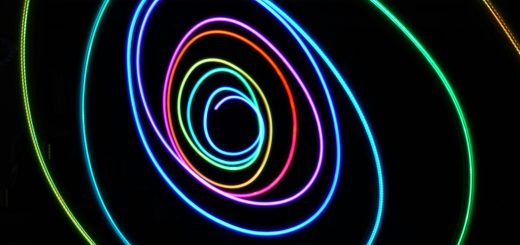Colors of Poop and What It Means: Health Insights

Hey there, amazing readers! 🖐️ Just a quick note: yes, we know there are a lot of ads here. Trust us, we get it—it’s not the prettiest look, but they help us keep this blog alive and kicking. Those pesky little ads cover the costs of all the behind-the-scenes magic, from hosting and tech stuff to creating content we hope you’ll love.
We’re committed to delivering quality posts, and your support (even just sticking around despite the ads) means everything to us. So, bear with us, and thanks for helping us keep the good vibes rolling. Now, on to the fun stuff! 😉
TRANSLATE BUTTON AT THE END OF THE ARTICLE
A Quick Overview
Hey there!
Let’s talk about something we all deal with but rarely discuss—poop!
Yup, that’s right!
The colors of our stool can offer surprising insights into what’s happening in our bodies.
From vibrant greens to concerning reds, our digestive output can be a window into our health.
So, grab a seat (preferably not the toilet) and let’s dive into the fascinating world of poop colors and what they mean for our health.
Understanding Your Digestive Rainbow: A Fun Guide
First off, why should we care about poop color?
Well, our stool can tell us a lot about our diet, hydration levels, and overall health.
Just like a rainbow, there are many hues to explore.
Each color reflects different things, from what we eat to potential health issues.
Think of your poop as a little messenger, sending signals straight from your gut.
Did you know that the process of digestion can transform food into a variety of colors?
This transformation happens as food moves through the gastrointestinal tract.
As it gets broken down, its color changes based on enzymes, bile production, and gut bacteria.
And hey, don’t worry!
Poop color changes aren’t always cause for alarm.
Sometimes, they can just be linked to what you had for lunch.
Ever had a beet salad?
You might get a surprise later!
So, let’s break down the major colors and understand what they might mean for our health.
The Basics: What Is Normal Poop Color?
Before we dive into the rainbow of poop, let’s establish what normal looks like.
Generally, a healthy poop is shades of brown.
This color comes from a mix of bile, bilirubin (a breakdown product of red blood cells), and food.
Normal stools can range from light brown to dark brown.
The key here is consistency and color.
Regular visits to the bathroom can help establish your baseline.
If you notice any unusual changes, don’t hesitate to take note.
Here’s a quick rundown of the shades to watch out for:
Light Brown: This can indicate a balanced diet.
Medium Brown: The most typical shade, often considered the healthiest.
Dark Brown: Might signal dehydration or excess bile.
Understanding your normal poop color can help you catch any unsettling changes early.
So, keep an eye on that toilet bowl—you never know what it might tell you!
Brown is Beautiful: The Ideal Shade Explained
Ah, brown!
The color we all want to see when we lift the toilet seat.
Brown poop indicates a healthy digestive process.
But what exactly contributes to this lovely hue?
The brown color primarily comes from bilirubin, a substance produced by the liver when it breaks down old red blood cells.
Bile, produced by the liver and stored in the gallbladder, also plays a significant role.
As bile mixes with the intestinal contents, it changes color, resulting in the beautiful brown shade.
Eating a balanced diet rich in fiber can help maintain this ideal color.
Foods like whole grains, vegetables, and fruits are excellent for your gut health.
If you’re consistently producing brown poop, it’s a sign that your digestive system is working well.
However, too much dark brown can indicate dehydration or a lack of dietary fat.
So, make sure you’re drinking enough water and incorporating healthy fats into your meals!
Green Poop: What Does It Say About Your Diet?
Green poop can be a head-scratcher!
A surge of green can stem from various factors, but don’t panic just yet.
One common reason for green poop is the consumption of green foods like spinach, kale, or green food coloring.
If you recently devoured a salad, you might notice a difference in your stool’s appearance.
But what if you didn’t munch on any leafy greens?
Another explanation could be rapid transit through the intestines.
If your food moves too quickly, bile doesn’t have time to break down completely, resulting in a green hue.
This can happen when you’re experiencing diarrhea or consuming high amounts of food containing artificial colors.
In most cases, green poop isn’t a cause for concern.
However, if it persists and is accompanied by discomfort or changes in consistency, you might want to consult a doctor.
After all, it’s better to be safe than sorry!
Yellow Poop: When to Worry and When to Relax
Yellow poop can be a mixed bag of signals.
On one hand, it might indicate a healthy diet full of fruits and veggies, particularly those rich in beta-carotene, like carrots or sweet potatoes.
So, if you’ve been munching on healthy foods, a yellowish tinge might just be a sign of good eating habits!
However, yellow poop can also point to malabsorption issues.
If your body isn’t absorbing nutrients effectively, fat can build up in your stool, giving it a greasy or yellow appearance.
Conditions like celiac disease or pancreatic insufficiency can lead to these types of issues.
If you notice yellow poop consistently, especially if it’s accompanied by symptoms like bloating or fatigue, it may be time to reach out to a healthcare professional.
It’s always better to err on the side of caution.
Red Poop: A Sign of Trouble or Just Beets?
Red poop can be alarming!
The first thought that comes to mind is often a burst of panic.
But hold on—red doesn’t always mean danger.
Sometimes, the cause might be as innocent as eating beets, tomatoes, or foods with red dye.
If you enjoyed a beet salad recently, you might see a little crimson surprise in the toilet bowl.
However, if you haven’t consumed anything red and encounter this color, it’s time to take it seriously.
Red poop can sometimes indicate bleeding in the lower gastrointestinal tract, such as hemorrhoids or more severe issues like diverticulitis or colorectal cancer.
If you spot red poop without a reason, don’t hesitate to contact a healthcare provider.
Better safe than sorry!
Black Poop: Understanding Iron and Other Causes
Black poop is another color that can raise eyebrows.
Much like red, black stools can indicate a cause for concern, but it isn’t always dire.
One of the common culprits for black poop is iron supplements.
If you’ve been taking these, congratulations!
You might be contributing to darker stools.
Similarly, certain medications and foods, like black licorice, can also darken your output.
However, if you haven’t altered your diet or started any new medications and still notice black stools, it could signify bleeding in the upper gastrointestinal tract.
Conditions like ulcers or gastritis can lead to this alarming color.
If black poop persists or is associated with other concerning symptoms—like nausea or abdominal pain—contact a healthcare professional immediately.
Your health is your priority!
White or Pale Poop: When to Consult a Doctor
White or pale poop is something we should never ignore.
This color usually results from a lack of bile, which can indicate serious health issues.
Bile, produced in the liver and stored in the gallbladder, plays a crucial role in digestion.
When the body isn’t producing enough bile, it can lead to pale or clay-like stools.
Conditions like hepatitis, liver disease, or bile duct obstructions can lead to this color change.
If you notice white or pale poop, especially if accompanied by other symptoms (like dark urine or jaundice), see a doctor right away.
This color change signals that your body might need immediate attention.
Orange Poop: What This Color Can Indicate
Orange poop can often be traced back to what we eat.
Carrots, sweet potatoes, and other orange foods can give our stool that vibrant hue.
Beta-carotene, which gives these foods their color, can leave a mark on our poop.
However, orange poop might also signal a problem with bile production.
If bile isn’t reaching the intestines effectively, it can result in a lighter stool color.
Again, if you haven’t been eating orange foods and see this color regularly, it may warrant a visit to your healthcare provider.
Glossy and Greasy: The Meaning of Clay-Like Poop
When poop has a glossy or greasy appearance, it can indicate undigested fat.
Conditions like pancreatitis or celiac disease can lead to malabsorption, resulting in clay-like stools.
Such stools can float and might have a foul odor.
If you notice this texture regularly, it’s essential to consult a doctor.
Our bodies need proper fat absorption to function well.
Unexpected Colors: What to Watch For in Your Stool
Beyond the common shades, there are some unexpected colors to be aware of.
Pink: Could be a sign of food dyes, but persistent pinkness might need investigating.
Gray: May indicate a lack of bile and should be assessed by a doctor.
Always pay attention to consistency and frequency along with color.
If something feels off, don’t hesitate to seek medical advice.
Healthy Habits: Keeping Your Poop Color on Track
To keep your poop in the ideal brown zone, consider these healthy habits:
Hydration: Drink plenty of water to keep digestion smooth.
Balanced Diet: Incorporate fruits, vegetables, whole grains, and healthy fats.
Regular Exercise: Staying active helps your digestive system.
Routine: Establish a regular bathroom routine to promote healthy habits.
Being mindful of what goes into your body can significantly impact what comes out.
So, let’s keep that toilet bowl happy!
Conclusion
Understanding the colors of poop might seem odd, but it’s a fantastic way to check in with our health.
Our stool serves as a reflection of our diets and bodily functions.
Most changes are harmless, but being aware can help us catch potential issues early.
So, the next time you visit the bathroom, take a moment to appreciate that little nugget of information your body is sharing with you.
After all, knowledge is power—even in the bathroom!

The Enlightenment Journey is a remarkable collection of writings authored by a distinguished group of experts in the fields of spirituality, new age, and esoteric knowledge.
This anthology features a diverse assembly of well-experienced authors who bring their profound insights and credible perspectives to the forefront.
Each contributor possesses a wealth of knowledge and wisdom, making them authorities in their respective domains.
Together, they offer readers a transformative journey into the realms of spiritual growth, self-discovery, and esoteric enlightenment.
The Enlightenment Journey is a testament to the collective expertise of these luminaries, providing readers with a rich tapestry of ideas and information to illuminate their spiritual path.
Our Diverse Expertise 🌟
While our primary focus is on spirituality and esotericism, we are equally passionate about exploring a wide range of other topics and niches 🌍📚. Our experienced team is dedicated to delivering high-quality, informative content across various subjects ✨.
To ensure we provide the most accurate and valuable insights, we collaborate with trusted experts in their respective domains 🧑🏫👩🏫. This allows us to offer well-rounded perspectives and knowledge to our readers.
Our blog originally focused on spirituality and metaphysics, but we’ve since expanded to cover a wide range of niches. Don’t worry—we continue to publish a lot of articles on spirituality! Frequently visit our blog to explore our diverse content and stay tuned for more insightful reads.







